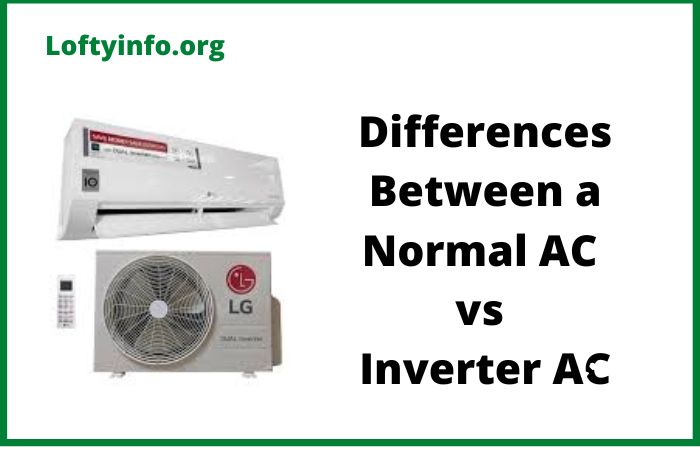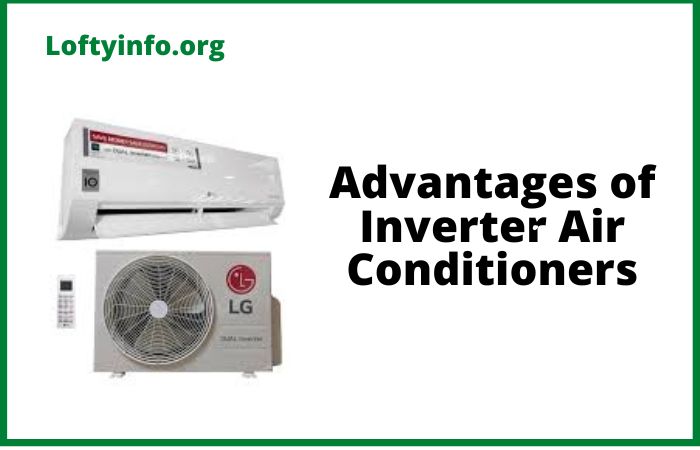How Dual Inverter AC Works
Air conditioning technology has evolved significantly over the past few decades with dual inverter AC systems representing one of the most impressive advances in cooling efficiency. If you’ve been shopping for a new air conditioner recently, you’ve likely encountered this term but what exactly does dual inverter mean and how does it work?
This comprehensive guide will walk you through everything you need to know about this revolutionary cooling technology.
What is a Dual Inverter AC?
A dual inverter air conditioner is an advanced cooling system that uses two rotary motors (compressors) instead of the single compressor found in traditional AC units.
This innovative design allows for more precise temperature control, improved energy efficiency and enhanced overall performance.
The term “dual” refers to the twin compressor configuration while “inverter” describes the variable frequency drive technology that controls the speed of these compressors.
To truly appreciate the significance of dual inverter technology, we need to understand the evolution of air conditioning systems and the problems that this innovation solves.
Traditional air conditioners have long suffered from inefficiency issues stemming from their crude on-off operation while single inverter systems improved matters but still had limitations in extreme conditions and precise control.
The dual inverter system represents the culmination of decades of engineering refinement, combining the best aspects of rotary compressor technology with sophisticated electronic control systems.
Unlike conventional systems that struggle to maintain consistent performance across varying load conditions, dual inverter ACs can adapt seamlessly to changing cooling demands while maintaining optimal efficiency.
The Evolution from Traditional to Dual Inverter Systems
Traditional non-inverter air conditioners operate on a simple binary system.
They are either running at full capacity or completely off.
When your room temperature rises above the thermostat setting, the compressor motor starts at maximum power, consuming significant energy during startup.
Once the desired temperature is reached, the entire system shuts down completely.
This cycle repeats throughout the day, creating several significant problems that have plagued homeowners for decades.
The constant starting and stopping creates enormous energy waste as electric motors consume their highest amount of power during startup often 3 to 7 times their normal running current.
This surge not only drives up electricity bills but also puts tremendous stress on your home’s electrical system.
The temperature in your room fluctuates constantly, swinging from too warm to too cool and back again, never achieving the stable comfort you desire.
Single inverter technology represented a major breakthrough when it was introduced. Instead of the crude on-off operation, single inverter systems use variable frequency drives to adjust compressor speed continuously.
This means the system can run at 30% capacity when minimal cooling is needed or ramp up to 100% capacity during peak demand.
The result is more stable temperatures, lower energy consumption and reduced wear on mechanical components.
Single inverter systems still have limitations.
During extreme weather conditions, a single compressor may struggle to provide adequate cooling while maintaining efficiency.
In very hot climates, the compressor often runs near maximum capacity for extended periods, reducing the efficiency benefits.
The single compressor design creates inherent limitations in how quickly the system can respond to sudden changes in cooling demand.
Dual inverter technology addresses these remaining limitations by employing two rotary compressors that work in perfect harmony.
This configuration provides unprecedented flexibility, allowing the system to operate one compressor at low speed for minimal cooling needs, both compressors at moderate speeds for standard comfort or both at high speed for rapid temperature reduction.
The result is a system that maintains peak efficiency across the entire range of operating conditions while providing superior comfort and reliability.
How Dual Inverter Technology Works
The heart of any dual inverter air conditioner lies in its twin rotary compressor system, a marvel of mechanical engineering that represents years of research and development. Unlike the reciprocating compressors found in older systems, rotary compressors use a rotating mechanism that provides smoother, more efficient operation with fewer moving parts and reduced vibration.
Each rotary compressor in a dual inverter system consists of a rotor that spins inside an eccentric chamber, creating varying volumes that compress the refrigerant gas.
The genius of the dual design lies in how these two compressors can be controlled independently while working toward the same goal.
An advanced electronic control system continuously monitors room temperature, outdoor conditions and system performance, making split second decisions about how to operate each compressor.
When minimal cooling is required, such as during mild weather or when the room is already near the desired temperature, the system may operate just one compressor at very low speed.
This provides gentle, efficient cooling that maintains comfort without energy waste.
As cooling demand increases, the control system can increase the speed of the first compressor, engage the second compressor at low speed or use various combinations of speeds to match the exact cooling requirement.
During peak demand periods, such as when you first turn on the AC in a hot room, both compressors can operate at high speed simultaneously.
This dual high speed operation can provide up to 40% more cooling capacity than comparable single inverter systems, bringing your space to comfortable temperatures much faster.
Once the desired temperature is reached, the system seamlessly transitions to lower-speed operation to maintain comfort efficiently.
The refrigeration cycle in dual inverter systems follows the same basic principles as all air conditioners but the execution is far more sophisticated.
The compressed refrigerant from both compressors combines before flowing through the condenser coil, where it releases heat to the outdoor air.
The high-pressure liquid refrigerant then passes through an expansion valve, which rapidly reduces its pressure and temperature.
This cold refrigerant absorbs heat from your indoor air as it passes through the evaporator coil, completing the cycle.
What makes dual inverter technology special is the precision with which this cycle can be controlled.
Advanced sensors throughout the system provide continuous feedback about temperatures, pressures and flow rates.
This information feeds into sophisticated control algorithms that can predict cooling needs and adjust compressor operation accordingly.
The system can even learn from your usage patterns, anticipating when you typically need more or less cooling and pre-adjusting operation for optimal efficiency.
The inverter drive technology itself represents a significant advancement in power electronics.
Variable frequency drives convert the fixed-frequency AC power from your electrical system into variable-frequency power that can control motor speed with incredible precision.
In dual inverter systems, these drives must coordinate the operation of two motors simultaneously, requiring advanced control algorithms and high-speed processing capabilities.
Modern dual inverter systems incorporate multiple layers of intelligent control.
Temperature sensors both indoors and outdoors provide real-time environmental data. Pressure sensors in the refrigeration circuit ensure optimal refrigerant flow and system efficiency.
Current sensors monitor compressor operation and can detect potential issues before they become problems.
All this information is processed by microcontrollers that can make thousands of adjustments per minute, ensuring optimal performance under all conditions.
The mechanical design of the twin rotary compressors is equally impressive.
The two compressors are typically mounted on a common shaft or designed with precise timing to minimize vibration and noise.
This balanced configuration not only runs more quietly than single compressor systems but also reduces wear on mounting brackets and other structural components.
The result is a system that not only performs better but lasts longer with less maintenance.
Superior Performance and Efficiency Benefits
The energy efficiency advantages of dual inverter technology are truly remarkable and represent one of the most compelling reasons for choosing these systems.
Traditional air conditioners waste enormous amounts of energy through their inefficient on-off cycling with studies showing that up to 30% of energy consumption can be attributed to startup losses alone.
Single inverter systems dramatically improve this situation, but dual inverter technology takes efficiency to an entirely new level.
The key to understanding dual inverter efficiency lies in the concept of load matching. Throughout most of the day, your cooling needs are relatively modest as you’re maintaining a comfortable temperature rather than fighting extreme heat.
Dual inverter systems excel in these conditions because they can operate at very low speeds while maintaining perfect temperature control.
One compressor running at 25% speed uses far less energy than a single compressor cycling on and off while providing more consistent comfort.
Real-world testing has shown that dual inverter air conditioners typically consume 30-50% less energy than traditional systems with some models achieving even greater savings under optimal conditions.
These savings translate directly to lower electricity bills with many users reporting monthly savings of $50-150 during peak cooling seasons.
Over the 15-20 year lifespan of a quality AC system, these savings can easily exceed the higher initial cost of dual inverter technology.
The efficiency benefits extend beyond simple energy consumption.
Dual inverter systems maintain much more stable indoor temperatures, typically within ±0.5°C of your set point compared to ±2-3°C for traditional systems.
This precision means you can set your thermostat at a slightly higher temperature while maintaining the same comfort level, further reducing energy consumption.
Many users find they can comfortable set their dual inverter system 1-2 degrees higher than they would with a traditional system, multiplying the energy savings.
Cooling speed represents another significant advantage of dual inverter technology.
When you need rapid temperature reduction such as cooling a hot house when you arrive home both compressors can work at maximum capacity simultaneously.
This can provide 140-160% of the cooling capacity of comparable single inverter systems, reducing the time needed to reach comfortable temperatures by 30-40%.
Faster cooling means less energy consumption overall, as the system spends less time working at high capacity.
The superior performance of dual inverter systems becomes even more apparent in challenging conditions.
During extremely hot weather when outdoor temperatures exceed 40°C (104°F), single compressor systems often struggle to maintain efficiency and may even shut down to protect themselves from overheating.
Dual inverter systems can distribute the load between two compressors, maintaining reliable operation and efficiency even in extreme conditions.
Humidity control represents another often-overlooked benefit of dual inverter technology.
The precise speed control allows the system to remove moisture from the air more effectively at lower speeds, creating more comfortable indoor conditions without overcooling. This is particularly beneficial in humid climates where traditional systems often struggle to balance temperature and humidity control.





